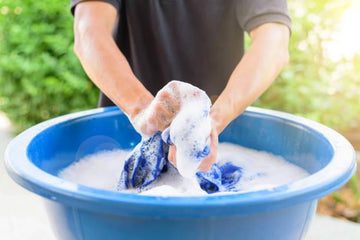The Importance of Rash Guards in Sports
Rash guards have become an essential part of sports gear, especially for athletes who engage in long training stretches. These versatile pieces of athletic wear offer protection, comfort, and durability, making them indispensable for various sports activities. The evolution of rash guards in sports has been remarkable, transforming from simple protective clothing to advanced gear designed to enhance performance and ensure safety.
Understanding the importance of rash guards in sports is crucial for athletes who want to maximize their training sessions. Proper rash guard care is essential to maintain their effectiveness and longevity. Fresh rash guards not only provide better protection but also contribute to a more enjoyable training experience. By following effective training gear maintenance practices, athletes can ensure their rash guards remain in top condition, even during the most intense workouts.
Rash guards are designed to withstand the rigors of sports activities, but they require proper care to maintain their quality. Regular washing and appropriate storage are key aspects of sports gear care. By implementing the right rash guard washing tips and storage techniques, athletes can extend the lifespan of their gear and keep rash guards fresh for longer periods. This not only enhances their performance but also ensures they get the most out of their investment in high-quality athletic wear.
Understanding the Fabric and Material of Rash Guards
Understanding the fabric and material of rash guards is crucial for effective rash guard care. These garments are typically made from a blend of spandex, nylon, and polyester. Each material contributes to the overall performance and durability of the rash guard, making it essential to know how to maintain them properly.
Spandex provides the stretch and flexibility needed for unrestricted movement during long training stretches. Nylon adds strength and durability, ensuring the rash guard can withstand rigorous use. Polyester, on the other hand, offers moisture-wicking properties, keeping you dry and comfortable during intense sessions.
To keep rash guards fresh, it's important to understand how these materials interact with sweat, saltwater, and chlorine. Proper training gear maintenance involves knowing the specific needs of each fabric. For instance, spandex can degrade if exposed to high heat, while nylon and polyester are more resistant but still require careful handling.
Effective sports gear care starts with recognizing the unique characteristics of your athletic wear. By understanding the fabric composition, you can implement the best rash guard washing tips and storage practices. This knowledge not only helps in maintaining the freshness of your gear but also extends the rash guard longevity, ensuring you get the most out of your investment.
Proper Washing Techniques for Rash Guards
When it comes to rash guard care, proper washing techniques are crucial. To keep your rash guards fresh and extend their longevity, it's essential to follow specific steps. Start by rinsing your rash guard in cold water immediately after training. This helps remove sweat, salt, and chlorine, which can degrade the fabric over time.
Next, use a gentle detergent designed for athletic wear care. Harsh chemicals can damage the material, so opt for something mild. Avoid using bleach or fabric softeners, as these can break down the fibers and reduce the effectiveness of your rash guard.
Hand washing is often the best method for training gear maintenance. Gently scrub the fabric without wringing or twisting it. If you prefer using a washing machine, place your rash guard in a mesh laundry bag to protect it from friction and stretching. Use a delicate cycle with cold water to prevent any damage.
After washing, rinse thoroughly to ensure all detergent is removed. Residual soap can cause irritation and affect the fabric's performance. Proper rinsing is a key aspect of rash guard washing tips that shouldn't be overlooked.
By following these washing techniques, you can maintain the quality and performance of your rash guards, ensuring they stay fresh and ready for your next long training stretch. Remember, consistent and careful washing is a cornerstone of effective sports gear care.
Drying Your Rash Guards Correctly
After ensuring your rash guards are properly washed, the next crucial step is drying them correctly. Proper drying techniques are essential for maintaining the quality and longevity of your training gear. Avoid using a dryer, as the high heat can damage the fabric and reduce the lifespan of your rash guards. Instead, opt for air drying, which is gentler on the material.
To air dry your rash guards, lay them flat on a clean, dry surface. This method helps to maintain their shape and prevents stretching. If you prefer hanging them, use a hanger that won't distort the fabric. Ensure they are placed in a well-ventilated area, away from direct sunlight, which can cause colors to fade and weaken the material over time.
Another tip for keeping your rash guards fresh is to avoid wringing them out. Wringing can cause unnecessary stress on the fibers, leading to wear and tear. Instead, gently press out excess water with a clean towel before laying them out to dry. This method helps to preserve the integrity of the fabric, ensuring your rash guards remain in top condition for longer training stretches.
By following these drying tips, you can significantly enhance the longevity of your athletic wear. Proper drying is a key aspect of sports gear care, ensuring your rash guards stay fresh and ready for your next training session.
Effective Storage Solutions for Rash Guards
Proper storage is crucial for maintaining the quality and longevity of your rash guards. After ensuring they are thoroughly dried, it's time to focus on effective storage solutions. This step is essential in your overall rash guard care routine, especially during long training stretches.
First, always store your rash guards in a cool, dry place. Avoid areas with high humidity, as moisture can lead to mold and mildew, compromising the fabric's integrity. A well-ventilated space is ideal for keeping your training gear fresh and ready for use.
Consider using breathable garment bags for storing your rash guards. These bags allow air circulation while protecting your gear from dust and other contaminants. This method is particularly effective for maintaining the freshness of your athletic wear over extended periods.
Another tip for rash guard storage is to avoid folding them tightly. Instead, gently fold or roll them to prevent creases and fabric damage. This practice helps in preserving the elasticity and overall condition of the material, ensuring your rash guards remain in top shape.
For those with limited storage space, hanging your rash guards can be a viable option. Use padded hangers to avoid stretching the fabric. This method not only saves space but also keeps your gear wrinkle-free and ready for your next training session.
Incorporating these storage solutions into your sports gear care routine will significantly enhance the longevity of your rash guards. By taking these steps, you ensure that your training gear remains fresh and functional, allowing you to focus on your performance without any distractions.
Using Anti-Odor Products to Keep Rash Guards Fresh
One of the most effective ways to keep rash guards fresh during long training stretches is by using anti-odor products. These products are specifically designed to combat the bacteria and sweat that accumulate during intense workouts. By incorporating them into your rash guard care routine, you can significantly extend the freshness and lifespan of your gear.
Anti-odor sprays and detergents are excellent choices for maintaining fresh rash guards. These products work by neutralizing the bacteria that cause unpleasant smells, ensuring your training gear remains odor-free. When selecting an anti-odor product, look for those that are safe for athletic wear care and won't damage the fabric.
Another tip for keeping rash guards fresh is to use anti-odor fabric softeners. These softeners not only help in maintaining the softness of the material but also add an extra layer of protection against odors. Incorporating these into your washing routine can make a noticeable difference in the freshness of your rash guards.
For those who prefer a more natural approach, consider using baking soda or vinegar during the washing process. Both of these household items are known for their odor-neutralizing properties and can be a great addition to your rash guard washing tips. Simply add a small amount to your wash cycle to help keep your gear smelling fresh.
By using anti-odor products, you can ensure that your rash guards remain fresh and ready for action, no matter how long your training stretches are. This simple yet effective step in sports gear care can make a significant difference in the longevity and performance of your athletic wear.
Regular Maintenance and Inspection of Rash Guards
Regular maintenance and inspection of your rash guards are crucial for ensuring their longevity and performance. Start by examining your gear after each training session. Look for any signs of wear and tear, such as loose threads, small holes, or stretched areas. Addressing these issues early can prevent further damage and extend the life of your rash guards.
When it comes to washing, follow specific rash guard washing tips to maintain their quality. Use cold water and a gentle detergent to preserve the fabric's elasticity and color. Avoid using bleach or fabric softeners, as they can degrade the material over time. After washing, air-dry your rash guards instead of using a dryer. High heat can weaken the fibers and reduce the garment's lifespan.
Proper storage is another key aspect of rash guard care. Store your gear in a cool, dry place away from direct sunlight. Prolonged exposure to UV rays can cause the fabric to fade and deteriorate. Additionally, avoid folding your rash guards for extended periods, as this can create permanent creases. Instead, hang them up to maintain their shape and integrity.
By incorporating these regular maintenance practices into your routine, you can keep your rash guards fresh and ready for those long training stretches. Consistent care not only enhances their durability but also ensures you get the most out of your athletic wear.
Tips for Extending the Lifespan of Your Rash Guards
To ensure your rash guards last through long training stretches, it's crucial to adopt effective care practices. Start by rinsing your rash guards immediately after each use. This simple step helps remove sweat, salt, and chlorine, which can degrade the fabric over time. For optimal rash guard care, use cold water and a gentle detergent designed for athletic wear care. Avoid harsh chemicals and bleach, as they can damage the material and reduce the lifespan of your gear.
When it comes to washing, always turn your rash guards inside out. This protects the outer surface from friction and wear during the wash cycle. Use a delicate or hand-wash setting on your machine to minimize stress on the fabric. If you prefer hand washing, gently agitate the rash guard in soapy water, then rinse thoroughly to remove all detergent residues.
Drying your rash guards properly is another key aspect of training gear maintenance. Never wring out your rash guards, as this can stretch and distort the fabric. Instead, gently press out excess water and lay the rash guard flat on a clean towel to air dry. Avoid direct sunlight and high heat, which can cause fading and weaken the material.
Proper rash guard storage is essential for maintaining their shape and elasticity. Store your rash guards in a cool, dry place, away from direct sunlight. Hanging them on padded hangers can help maintain their form, but avoid wire hangers that can leave marks and cause stretching. For long-term storage, consider folding them neatly and placing them in a breathable fabric bag to protect them from dust and moisture.
By following these tips, you can significantly extend the lifespan of your rash guards, ensuring they remain fresh and functional throughout your long training stretches. Consistent care and attention to detail will keep your sports gear in top condition, allowing you to focus on your performance without worrying about your equipment.





